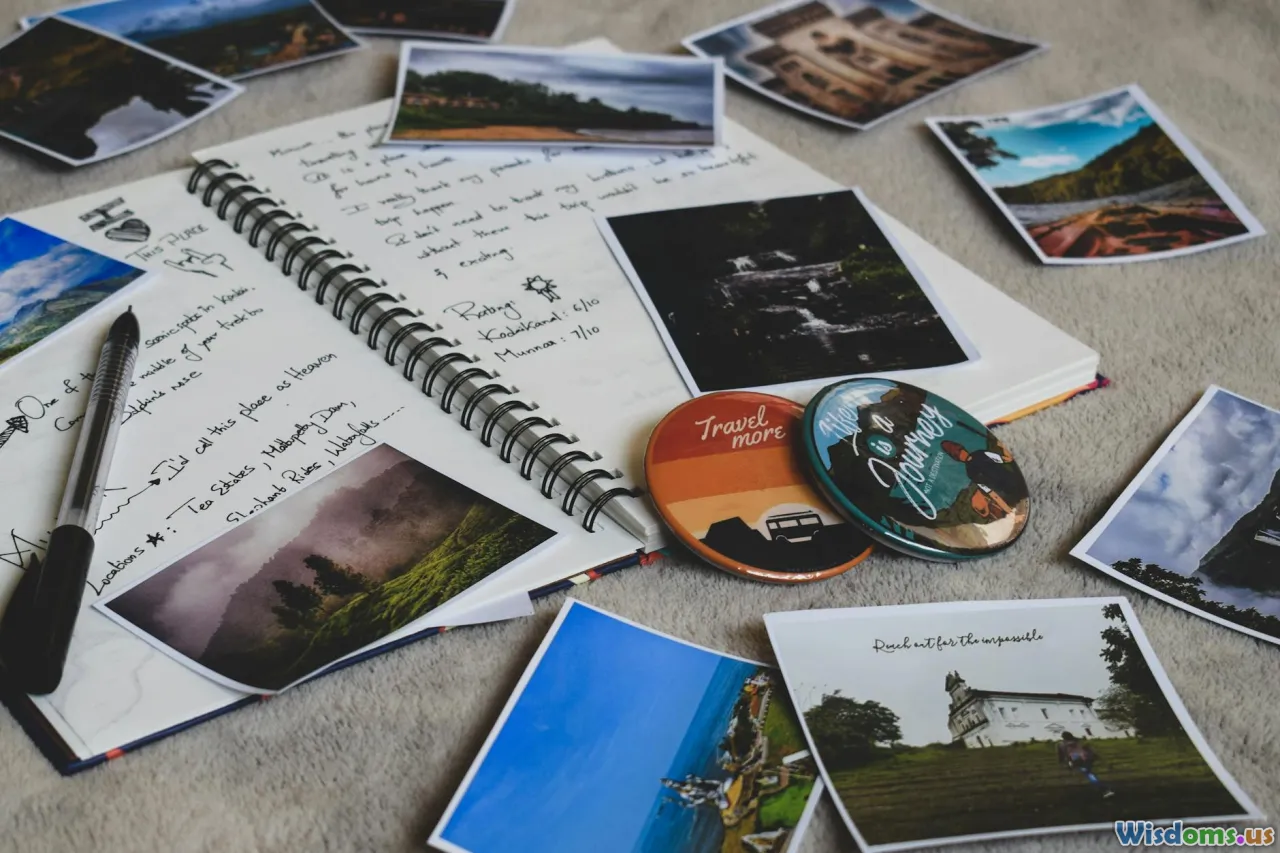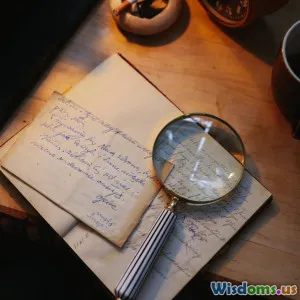
Creative Writing Tips Even Nonfiction Students Should Try
9 min read Explore creative writing techniques that nonfiction students can apply to enhance storytelling, engagement, and clarity in their work. (0 Reviews)
Creative Writing Tips Even Nonfiction Students Should Try
Writing nonfiction can sometimes feel like a dry exercise in reporting facts, figures, and straightforward analysis. But what if nonprofit writers embraced the vibrant techniques of creative writing? You wouldn’t just write reports or essays—you’d capture attention, spark emotional connection, and enrich your readers’ experience. This article delves into creative writing tips nonfiction students should try to make their writing more impactful and memorable.
Introduction: Beyond Facts – The Art of Storytelling in Nonfiction
Nonfiction writing is often unfairly pigeonholed as purely utilitarian. Yet the most influential nonfiction books or articles are often those that tell an engaging story or create vivid imagery. Consider Joan Didion’s memoirs, Malcolm Gladwell’s investigative journalism, or even long-form magazine features —all nonfiction works enhanced by creative storytelling. For students mastering nonfiction, borrowing techniques from creative writing isn’t just useful; it’s transformative.
This article uncovers specific methods nonfiction students can integrate into their work:
- Incorporating narrative elements
- Using vivid sensory details
- Establishing a compelling voice
- Playing with structure and pacing
- Employing metaphors and other literary devices
These approaches will take your nonfiction writing from informational to unforgettable.
1. Embrace Narrative Structure: Weaving Facts Into Stories
Why Storytelling Matters in Nonfiction
Stories are built into human cognition—we think and remember through narrative. Research in cognitive psychology shows that stories help readers process and retain information better than plain exposition. For example, a study published in Psychological Science demonstrated that information embedded in stories was remembered significantly longer than the same facts in a non-narrative format.
How to Use Narrative in Nonfiction Writing
Even when writing essays, biographies, or reports, consider framing your piece with a clear beginning, middle, and end, much like a story:
- Beginning: Introduce a hook, context, or problem.
- Middle: Develop the narrative by presenting key information, challenges, or developments.
- End: Provide a resolution, conclusion, or call to action.
Example:
In Erik Larson’s The Devil in the White City (2003), historically grounded nonfiction becomes a gripping tale by narrating concurrent stories of an architect and a serial killer during the 1893 Chicago World’s Fair.
For students, try outlining your nonfiction topics as a series of events or arguments linked logically but told with tension and flow.
2. Engage the Senses: Using Vivid Imagery and Detail
The Power of Sensory Description
Descriptive language isn’t limited to fiction. Engaging the five senses in nonfiction writing situates readers in the environment you're describing, enhancing empathy and interest.
As journalist Gay Talese explained, descriptive details “make the readers feel they’re right there.” Even historical or scientific nonfiction can benefit from sensory-rich passages.
Techniques and Examples
- Use specific rather than general adjectives. Instead of “the forest,” say “the damp pine forest suffused with the tang of resin.”
- Incorporate sensory verbs: not just see or hear, but squelch, shimmer, buzz, and crackle.
Example:
In Into the Wild, Jon Krakauer doesn’t only relay Christopher McCandless’s journey facts but captures the biting cold, the crackling of campfires, and the stark wilderness silence—immersing readers fully.
Nonfiction students can practice by describing settings or scenes in their research areas using sensory words to evoke atmosphere.
3. Develop Your Unique Voice: Authenticity Sells
Why Voice Matters
Voice conveys personality, authority, and authenticity. It is especially impactful in nonfiction, where establishing trust and connection is key.
As writing coach Ann Handley puts it, “Your voice is your reputation on the page.” Readers respond to honest, confident, and relatable voices.
How to Build Your Voice
- Be honest: Don’t shy away from sharing your perspective.
- Mix formal and informal tones judiciously: Strategic informality can humanize serious topics.
- Read aloud: This helps you recognize your natural rhythm and tone.
Example:
David Sedaris’s essays succeed not just because of humor but due to his distinctive, candid voice that blends self-deprecation with sharp observational wit.
For nonfiction students, journaling opinions or reflections alongside factual notes could nurture a compelling, consistent voice.
4. Play with Structure and Pacing: Breaking Conventional Norms
Dynamic Organization
While traditional nonfiction follows linear or categorical formats, creative nonfiction often experiments with structure for emphasis or dramatic effect.
Consider non-linear narratives, alternating perspectives, or thematic sections rather than chronological sequence.
Pacing Techniques
Varying sentence lengths and paragraph rhythms can create momentum or pauses, controlling reader engagement.
- Short sentences can add impact or urgency.
- Longer, complex sentences allow for elaboration and reflection.
Example:
Mary Roach’s books, such as Stiff, often jump between chapters on disparate topics but connect them thematically, keeping readers curious.
Students can try rearranging their drafts or varying sentence structure to see how flow changes.
5. Employ Metaphors and Literary Devices to Clarify and Enrich
Why Use Literary Devices in Nonfiction?
Analogies, metaphors, and symbolism allow writers to convey complex ideas simply and memorably.
Jonathan Gottschall, author of The Storytelling Animal, argues that figurative language taps into the brain’s pattern recognition, enhancing understanding and engagement.
Examples in Practice
- Metaphor: Comparing data analysis to “decoding a buried treasure map” makes abstract concepts tangible.
- Personification: Describing a machine as “breathing” or “hesitating” animates technology.
Example:
In The Immortal Life of Henrietta Lacks, Rebecca Skloot personifies cells to explain scientific concepts without oversimplifying.
For nonfiction students, experimenting with metaphors can convey dry topics more vividly.
Conclusion: Nonfiction Writing as an Art Form
Creative writing is traditionally associated with fiction, but its techniques are invaluable to nonfiction students seeking to captivate and educate simultaneously. Incorporating narrative structures, sensory details, authentic voice, innovative formats, and literary devices does more than embellish—it deepens the reader’s connection to your work.
By applying these tips, nonfiction writers transcend mere information delivery and engage readers on intellectual and emotional levels. Whether you’re working on essays, reports, or biographies, temper your facts with creativity to produce lasting, impactful writing.
Ready to Try Creative Writing Techniques?
- Start small: add a vivid description or metaphor in your next essay.
- Outline nonfiction pieces with a storytelling arc.
- Read voices you admire and note what sounds authentic.
Creativity is not about forsaking facts but about presenting them so well that readers care deeply. Give these creative writing tips a try — your nonfiction work will thank you.
References:
- Didion, Joan. The Year of Magical Thinking. Vintage, 2007.
- Gladwell, Malcolm. The Tipping Point. Little, Brown, 2000.
- Krakauer, Jon. Into the Wild. Anchor, 1997.
- Larson, Erik. The Devil in the White City. Vintage, 2003.
- Gottschall, Jonathan. The Storytelling Animal. Houghton Mifflin Harcourt, 2012.
- Roach, Mary. Stiff: The Curious Lives of Human Cadavers. W.W. Norton, 2003.
Additional Reading:
- Elbow, Peter. Writing with Power. Oxford University Press, 1981.
- Zinsser, William. On Writing Well. Harper Perennial, 2006.
Rate the Post
User Reviews
Popular Posts




















